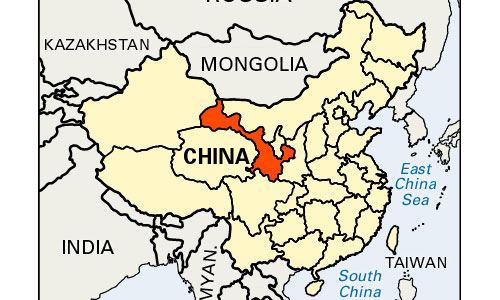On late September, Gansu hosted the Third Silk Road (Dunhuang) International Cultural Expo to extend the room for further understating between China and the outside world and unravelling the cultural heritage of Gansu province to the world.
Themed, “Showcase the Ancient Silk Road, Promote People-to-People Exchanges, and Build a More Beautiful and Harmonious World”, the expo aimed at reviving the ancient Silk Road and pushing forward the prosperity of world trade.
The expo was held in Gansu’s Dunhuang City, which has more than 2,100 years historic record and it is the earliest open area in ancient China. Dunhuang Mogao Caves, listed as the world cultural heritage in 1987, unfold the story of Buddhism, which entered China through the ancient Silk Road. The Mogao Caves, also known as the “Thousand Buddha Grottoes”, were originally built in 366 AD and they, along with Longmen Grottoes and Yungang Grottoes, are one of the three famous ancient Buddhist sculptural sites of China. Mogao Caves are located about 25-kilomtere southeast of Dunhuang City and at the eastern foot of Mingsha Mountain.
To one’s unmitigated chagrin, the ancient Silk Road lost its importance and Mogao Caves underwent a downward spiral with the domination of sea-route trade in China and elsewhere. Although Mogao Caves have been eroded by nature, declined gradually after the Tang Dynasty and disfigured by people over time, there are still 492 caves intact with preserved murals and colorful paintings, said our tour guide to foreign media delegates on late September while detailing about historical sites and Buddhist art in Mogao Caves.
Media delegates also visited Mingsha Mountain and Crescent Lake/Spring, known as the “wonders of the desert” and located 5-kilometer south of Dunhuang City, Gansu province.
Stepping on the sizzling heart of Mingsha Mountain, the herd of camels were the reminiscence of ancient Silk Road when merchants traveled by camels – exporting rare birds and animals, perfumes, glassware, pearls, gold and silver coins from Western countries, and music, dance, food, and clothes from Western and Central Asia to China whilst importing silk, paper products, printing, Chinese dishes (plates, bowls, cups, cases), gunpowder and compass to their countries. I felt a strong sense of nostalgia for the ancient Silk Road, which started from China and passed through the Gansu province, and the friendly exchanges of goods and cultural values. Gone are the days when merchants from Asia, Africa and Europe travelled from desert to desert and passed from the same province. The ringing bells of camels, belonged to the locals for giving tourists a ride, filled me with mixed feelings. In the ancient time, such bells rang from Asia to Africa and Europe and vice versa to exchange material and spiritual products between nations. It is too hard to put into words the delight of leaving sand dunes behind while strolling the desert, waving at the locals and saying “ni hao!” (Hello). The locals were waving back with a warm smile. This memorable time filled me with an outpouring of sheer joy and I wished from the core of my heart one day people of different backgrounds again wave at one another, embrace one another and communicate with one another on the same route.
The Silk Road is termed “Road of Dialogue” by the UNESCO to emphasize “dialogue among civilizations”, “intercultural and interreligious dialogue” and “rapprochement of cultures”. To increase mutual understanding, promote a peaceful coexistence, enhance the spirit of brotherhood and build a “community with shared future for mankind” through trade and people-to-people interactions, the world needs to revive the ancient Silk Road. Moreover, reviving the Silk Road in the modern era under the Belt and Road Initiative (BRI), proposed by Chinese President Xi Jinping in 2013, will revitalize historical sites and cultural heritage across the world and increase mutual understanding among nations.
Addressing the expo, Ernesto Ottone Ramirez, Assistant Director-General for Culture of UNESCO, spoke highly of the Dunhuang City in general and of the Silk Road in particular. He said, “With its rich cultural heritage and evident contemporary creativity, the communities along the Silk Road are well placed to tap into the enormous potential of the creative economy for sustained, inclusive and sustainable development.” He said UNESCO will support China in its effort for reviving the Silk Road under the BRI and assured that “the spirit of exchange and prosperity that marked the ancient Silk Road” will continue well into the future.
Moreover, Afghan second-vice president Sarwar Danish said in his speech, “Gansu province of China and Bamiyan province of Afghanistan are now two sister cities, two cultural and historical sisters and are the symbol of shared culture and history between Afghanistan and China.” He asked Gansu’s historians, artists, and tourists to come to Afghanistan and visit Gansu’s cultural sister, Bamyian city and see its historical and natural spectacular sites and watch the vast landscape of the Silk Route from Gansu to Bamiyan.
Home » Opinion » Gansu – the Sister City of Bamyan Province
Gansu – the Sister City of Bamyan Province
| Hujjatullah Zia

